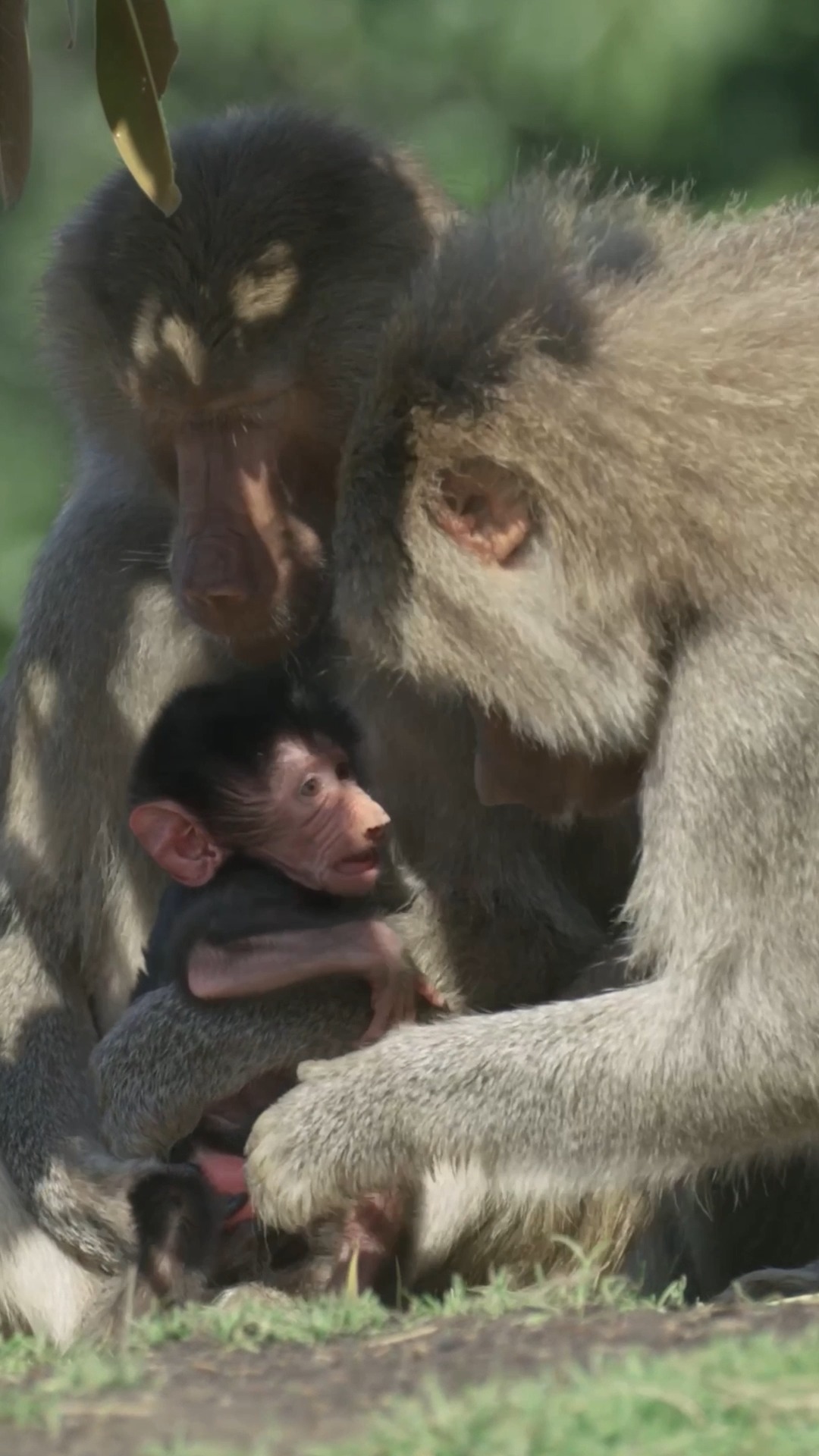- Introduction to the hamadryas baboon troop and the new infant’s significance.
- Detailed insights into the behavior and early life of baby baboons.
- Importance of maternal bonding and survival strategies in baboon groups.
- Role of baboons in their ecosystems and the impact of conservation efforts.
- Integration of zoological insights with captive baboon care in zoos.
The hamadryas baboon troop recently just got a lot more adorable with the arrival of a pink-bootied infant. This new addition brings excitement and curiosity, showcasing the natural wonder of baboon family dynamics and maternal bonding. The hamadryas baboon, notable for its distinctive social structure and behavior, allows for a fascinating study of primate life.
Initially, baby baboons cling to their mothers, holding onto their hair during the first few weeks of life. This initial close contact is crucial. It not only ensures that the infant is kept safe from potential threats but also fosters nutritional dependency through nursing. During this time, the infant learns critical survival skills by observing and interacting with its mother’s environment. This period is a foundational stage in a baboon’s life, setting the stage for future independence.
The role of the mother in a baboon troop is vital, not just for the infant’s survival but also for the social cohesion of the group. Maternal instincts guide the mother to protect her offspring fiercely. Threats can come from predators or even from within the troop, where social hierarchies dictate interactions. Understanding these dynamics offers deep insights into the social behavior of primates.
Baboons, particularly the hamadryas species, play crucial roles in their ecosystems. As omnivorous foragers, they impact the seed dispersion and control of insect populations, contributing to ecological balance. The need for conservation of these intelligent primates cannot be overstated. Habitat destruction and hunting are significant threats to their populations. Conservation efforts focus on protecting natural habitats and maintaining genetic diversity.
In modern zoos, hamadryas baboons serve as ambassadors for their species. Zoos manage care by providing environments that mimic their natural habitats as closely as possible. Enrichment programs are designed to stimulate the baboons physically and mentally, featuring activities that encourage natural behaviors like foraging and problem-solving. These programs are instrumental in educating the public about the importance of wildlife conservation.
With their complex social structures and vibrant interactions, baboons provide an ongoing opportunity for research and learning. Their behaviors can inform broader conservation efforts and offer parallels to human social structures. Through dedicated research and conservation work, we can foster a greater understanding of these fascinating primates and their importance to biodiversity.
The recent addition of the hamadryas baboon infant highlights the cycle of life within the troop and reminds us of the beauty and complexity of the natural world. With ongoing efforts in conservation and careful management in zoological settings, we continue to learn and appreciate the intricate lives of baboons, ensuring a future for these remarkable animals. The new pink-booty-cutie has indeed made the troop and their space an engaging place to witness the wonders of primate life.
*****
Source Description
Meet the new pink-booty-cutie 🍑
The hamadryas baboon troop just got a lot more adorable thanks to the recent arrival of a big-eared infant. Baby baboons cling to their mama’s hair for their first three weeks of life until they grow strong enough to explore on their own but will remain close to her side for several months so they can nurse and stay safe from potential predators.


